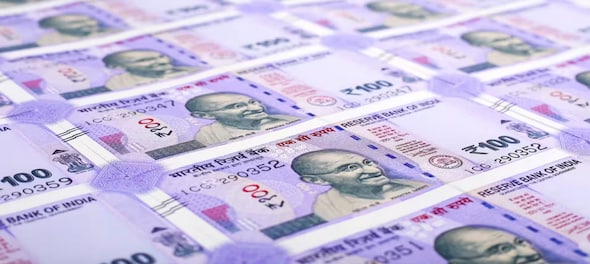
States' debt will remain elevated at 31-32% of their gross domestic product amid higher capital outlays and moderate revenue growth this fiscal, with overall borrowings likely to rise by 9% to over ₹87 lakh crore, a report said.
The indebtedness of a state is measured as the ratio of its debt to gross state domestic product (GSDP).
Before Covid, the debt-GSDP ratio was at 28-29. However the aggregate gross fiscal deficit (GFD) as a ratio of GSDP is expected to remain at 2.5, well below the mandated level of 3 under the Fiscal Responsibility and Budget Management Act, according to a Crisil Ratings report.
With lower-than-expected revenue growth, states are forced to borrow more to expand capital outlays, besides meeting high committed revenue expenditure related to salaries, pensions and interest costs. This, along with modest single-digit revenue growth, will keep the debt level high at 31-32 per cent of their gross domestic output.
The report is based on the numbers available from the top 18 states (Maharashtra, Gujarat, Karnataka, Tamil Nadu, Uttar Pradesh, Telangana, Rajasthan, Bengal, Madhya Pradesh, Andhra Pradesh, Kerala, Odisha, Punjab, Bihar, Chhattisgarh, Haryana, Jharkhand and Goa), accounting for 90% of the aggregate GSDP.
After a small revenue surplus in fiscal 2022, the states have slipped into deficit in fiscal 2023, as overall revenue grew at a modest 8% while revenue expenditure rose faster at 11% on-year.
This fiscal, overall revenue is expected to rise only 6-8%, supported by goods and services tax collections, devolutions from the Centre, and taxes and duties on liquor.
On the other hand, revenue expenditure is set to increase 8-10%, driven by higher committed expenditure, and increasing social welfare and public health-related expenses which combined come in at around 65% of the total revenue expenditure of the states.
According to Anuj Sethi, a senior director with the agency, the revenue deficit will inch up to 0.5% of GSDP this fiscal from 0.3% last fiscal.
This, coupled with the 18-20% on-year increase in capital outlays or 2.3% of GSDP on key infrastructure segments such as water supply and sanitation, urban development, roads and irrigation, will necessitate higher borrowings this fiscal too.
However, the 50-year interest-free loans worth ₹1.3 lakh crore from the Centre to the states will help meet part of the capital outlay and catalyse investments. This loan is not included in the borrowing limit of 3% of GSDP for states this fiscal.
According to Aditya Jhaver, a director with the agency, overall balance sheet borrowings of the states and off-budget debt funding like guarantees to the power sector and irrigation entities, are likely to go up by ₹7.5 lakh crore this fiscal and cross ₹87 lakh crore, keeping states' indebtedness high at 31-32%, similar to fiscal 2023.
Already, borrowings through state development loans, which comprise 65% of their overall borrowings, rose 28% on-year between April and November 2023.
Any slowdown in economic activity can hurt GSDP growth and pose downside risks. On the other hand, better-than-expected tax buoyancy or support from the Centre in the form of higher grants may provide further liquidity buffer to states.
Check out our in-depth Market Coverage, Business News & get real-time Stock Market Updates on CNBC-TV18. Also, Watch our channels CNBC-TV18, CNBC Awaaz and CNBC Bajar Live on-the-go!


2024 Lok Sabha Elections | Will Amethi and Rae Bareli see the rise of Priyanka Gandhi as a dominant political figure
May 18, 2024 8:59 AM
Lok Sabha Election 2024: I.N.D.I.A. bloc to hold rally at Mumbai's BKC today
May 17, 2024 5:18 PM
In Ayodhya, voters talk of a promise fulfilled and yearning for development
May 17, 2024 2:10 PM
Fight of heavyweights in Sambalpur where farmers, weavers hold the key
May 17, 2024 12:25 PM

